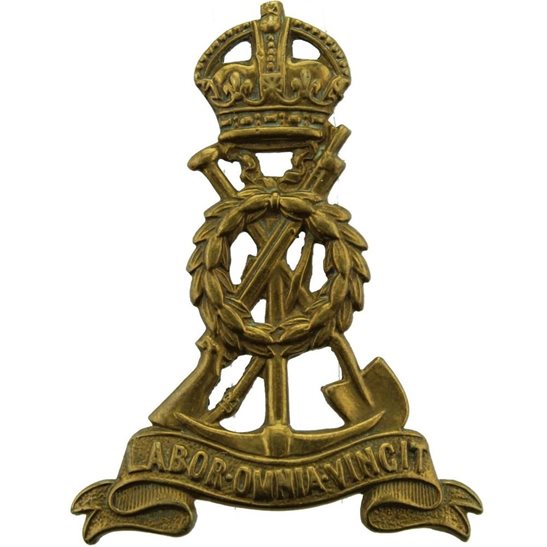Personal Details
Born: 8 May 1874 in Whitchurch, Shropshire and baptised 28 May the same year at the United Reformed Church, Whitchurch.
Family: He was the eldest of six children born to Daniel Sherbrooke, a house painter, and his wife Caroline. He married Mary Simmons on 30 October 1898 in Whitchurch, Shropshire. The couple had a daughter, Doris, born in 1909 in Whitchurch.
Residence: At the time of William`s baptism in 1875 his family were living in Highgate, Whitchurch and were still there in 1881. By 1891 they had moved to 83 Green End, Whitchurch. In 1901 and now married, he and his wife were living at 24 Station Road, Whitchurch with his wife`s sister. Ten years later their address was 22 Station Road, Whitchurch. This continued to be William`s home until his death.
Employment: He was a house painter and decorator.
Died: In 1946 in Shrewsbury, Shropshire, aged 72, and was buried 1 January 1947 in Whitchurch cemetery.
Military Details
Regiment: Labour Corps (previously King’s Shropshire Light Infantry)
Rank: Private
Service Number: 340139 (previously 7893)
Date of Enlistment: Not known
Date of Discharge: 13 February 1919
Reason for Discharge: Demobilisation
William was awarded the Campaign Medals (1915 Star, British War Medal, and Victory Medal).

The 1914 Star (also known as 'Pip') was authorised under Special Army Order no. 350 in November 1917 and by an Admiralty Fleet Order in 1918, for award to officers and men of the British and Indian Expeditionary Forces who served in France or Belgium between 5 August and midnight of 22–23 November 1914. The former date is the day after Britain's declaration of war against the Central Powers, and the closing date marks the end of the First Battle of Ypres.
The 1914–15 Star (also known as 'Pip') was instituted in December 1918 and was awarded to officers and men of British and Imperial forces who served against the Central European Powers in any theatre of the Great War between 5 August 1914 and 31 December 1915. The period of eligibility was prior to the introduction of the Military Service Act 1916, which instituted conscription in Britain.
The British War Medal (also known as 'Squeak') was a silver or bronze medal awarded to officers and men of the British and Imperial Forces who either entered a theatre of war or entered service overseas between 5th August 1914 and 11th November 1918 inclusive. This was later extended to services in Russia, Siberia and some other areas in 1919 and 1920. Approximately 6.5 million British War Medals were issued. Approximately 6.4 million of these were the silver versions of this medal. Around 110,000 of a bronze version were issued mainly to Chinese, Maltese and Indian Labour Corps. The front (obv or obverse) of the medal depicts the head of George V. The recipient's service number, rank, name and unit was impressed on the rim.
The Allied Victory Medal (also known as 'Wilfred') was issued by each of the allies. It was decided that each of the allies should each issue their own bronze victory medal with a similar design, similar equivalent wording and identical ribbon. The British medal was designed by W. McMillan. The front depicts a winged classical figure representing victory. Approximately 5.7 million victory medals were issued. Interestingly, eligibility for this medal was more restrictive and not everyone who received the British War Medal ('Squeak') also received the Victory Medal ('Wilfred'). However, in general, all recipients of 'Wilfred' also received 'Squeak' and all recipients of The 1914 Star or The 1914/1915 Star (also known as 'Pip') also received both 'Squeak' and 'Wilfred'. The recipient's service number, rank, name and unit was impressed on the rim.

